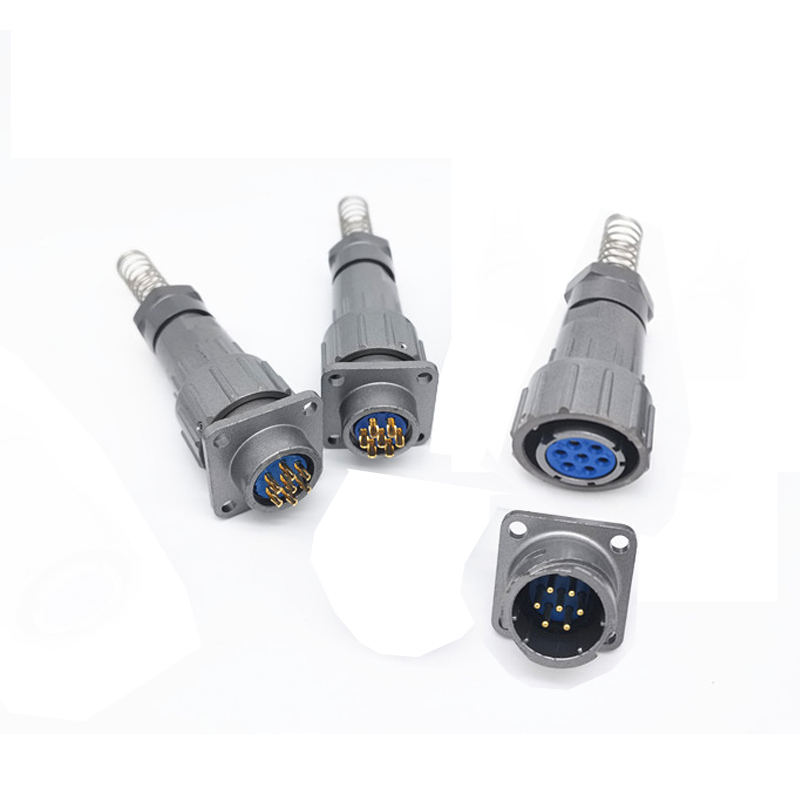The Vital Role of Rail Connectors in Railway Systems
2025-03-25
Rail connectors are crucial components in the railway infrastructure that ensure the smooth operation of train systems. These small yet significant devices play an important role in joining pieces of rail track together, facilitating the efficient movement of trains across vast distances. Although rail connectors may not always be in the spotlight, their function is essential for the safety, stability, and overall performance of railway networks.
What Are Rail Connectors?
A rail connector is a mechanical device used to join two adjacent sections of railway track. The primary function of a rail connector is to provide a stable and secure connection between the rails, allowing for smooth and uninterrupted train movement. Made from high-strength materials such as steel, these connectors must be durable enough to withstand the enormous pressure and stresses caused by the weight and speed of trains.
Rail connectors are designed to absorb shocks, vibrations, and temperature-induced expansions of the rail tracks. In doing so, they prevent misalignment or displacement of the rails, which could lead to accidents or equipment damage. They come in different types and configurations, each suited to specific operational requirements and track conditions.
Types of Rail Connectors
There are various types of rail connectors, each designed to fulfill specific needs in the railway system. Some of the most commonly used include:
1. Bolted Rail Connectors: These connectors use bolts to secure two sections of rail track together. They are the most traditional type of connector and are widely used in various rail systems. While bolted connectors are reliable, they can require regular maintenance to ensure the bolts remain tight and secure.
2. Welded Rail Connectors: These connectors involve welding the rail sections together, creating a continuous track without any physical gaps. Welded rail connectors are more commonly used in high-speed rail lines, as they reduce the risk of track misalignment and the need for constant maintenance.
3. Clip-on Rail Connectors: Clip-on connectors are designed for ease of use and quick installation. They are often used in temporary track sections or during maintenance work. These connectors allow for efficient track changes and repairs.
4. Elastic Rail Fasteners: These connectors are made of elastic materials such as rubber or composite materials. They absorb vibrations and reduce noise, making them ideal for urban areas where minimizing noise pollution is a priority.
Why Are Rail Connectors Important?
Rail connectors are not just about connecting two pieces of track; they are vital for the overall safety and performance of the railway system. When tracks are properly connected and aligned, the risk of derailments and other safety issues is minimized.
1. Ensuring Track Integrity: Rail connectors keep the rail sections aligned, preventing any lateral movement or misalignment that could disrupt train travel. This helps to maintain track stability and ensures that the rail network functions safely and efficiently.
2. Reducing Wear and Tear: When rail connectors are functioning properly, they ensure smoother train movement, which reduces the amount of friction between the train wheels and the track. This results in lower wear and tear on both the trains and the tracks, ultimately reducing maintenance costs and extending the lifespan of the railway system.
3. Enhancing Train Speed and Efficiency: The proper functioning of rail connectors contributes to a smoother ride for trains. This improves overall performance, increases speed, and reduces energy consumption. High-speed trains, in particular, rely on secure and stable track connections to maintain safe and efficient operation at high velocities.
Maintaining Rail Connectors
Like any other part of the railway system, rail connectors require regular inspection and maintenance. Over time, wear and tear from train traffic, weather conditions, and environmental factors can affect the condition of rail connectors.
Routine maintenance helps identify signs of deterioration, such as cracks or corrosion in the connectors, and allows for early repairs to prevent issues from escalating. Proper maintenance ensures the integrity of the rail network, minimizes disruptions to train services, and enhances safety for passengers and cargo.
The Future of Rail Connectors
As rail technology continues to evolve, so too does the design and functionality of rail connectors. With the development of smarter rail networks, connectors are expected to become more sophisticated. Future advancements may include connectors with built-in sensors that can monitor track conditions in real-time. These sensors could help detect issues like track deformation or wear before they become a safety concern, allowing for more proactive maintenance and reducing the likelihood of accidents.
Additionally, innovations in materials science may lead to the development of even more durable, lightweight, and cost-effective rail connectors. These improvements could help reduce the overall maintenance burden on railway operators while increasing the longevity and efficiency of the rail system.
Conclusion
Rail connectors are small yet vital components that play an important role in the functionality of the global railway system. By ensuring proper alignment and minimizing wear, rail connectors help improve safety, reduce maintenance costs, and support the efficient movement of trains. As rail networks continue to grow and technology advances, the importance of reliable, durable, and innovative rail connectors will only increase.



